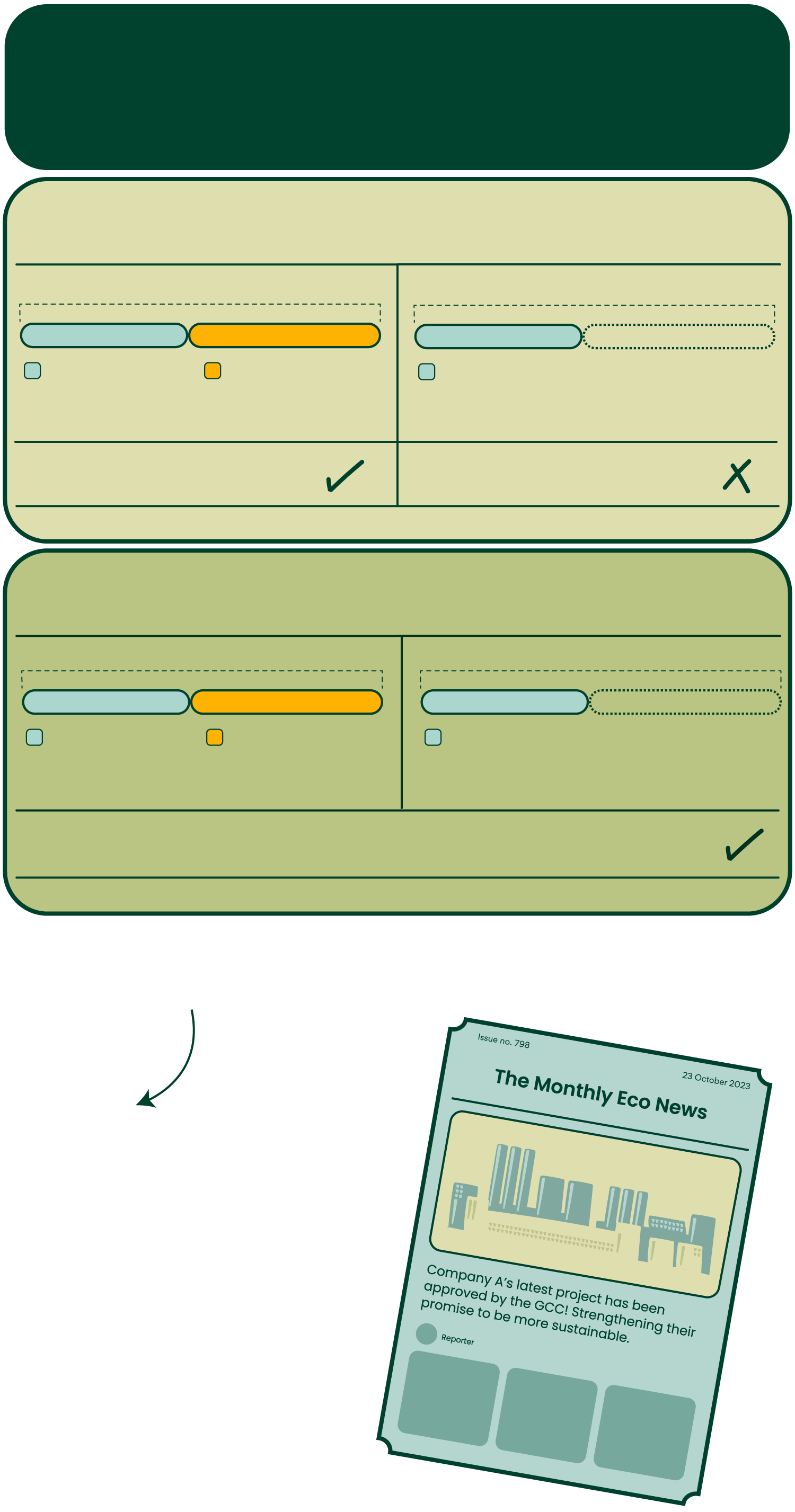
Concept of Additionality:
A reduction in emissions is considered “additional” if it would not have happened
without the market for carbon credits. A project is additional when it only exists
because of the funding derived from carbon credits.
What happens when a project is considered Additional?
Initial area of forest
Initial area of forest
= Predicted area
of forest left
= Predicted forest loss
converted to carbon
credits and all sold
= Predicted area
of forest left
Predicted forest loss
converted to carbon
credits, but not
enough sold
This project cannot proceed.
Will be postponed or cancelled.
This project can proceed.
What happens in Non-additional projects?
Initial area of forest
Initial area of forest
= Predicted area
of forest left
= Predicted forest loss
converted to carbon
credits and all sold
= Predicted area
of forest left
Predicted forest loss
converted to carbon
credits, but not
enough sold
The project will proceed no matter what.
By accepting non-additional projects, it means that the GCC supports
projects that will continue to happen whether or not they sell any
carbon credits.
But why is accepting
non-additional projects bad?
Companies or individuals that buy
these credits can report that they’ve
reduced their own emissions without
legitimately contributing to a carbon
reduction project.

Concept of Additionality:
A reduction in emissions is
considered “additional” if it
would not have happened
without the market for
carbon credits. A project is
additional when it only exists
because of the funding
derived from carbon credits.
What happens when a
project is considered
Additional?
Initial area of forest
= Predicted forest loss converted to carbon credits and all sold
= Predicted
area of forest
left
This project can proceed.
Initial area of forest
= Predicted
area of forest
left
Predicted forest loss
converted to carbon
credits, but not
enough sold
This project cannot proceed.
Will be postponed or
cancelled.
What happens in
Non-additional projects?
Initial area of forest
= Predicted forest loss converted to carbon credits and all sold
= Predicted
area of forest
left
Initial area of forest
= Predicted
area of forest
left
Predicted forest loss
converted to carbon
credits, but not
enough sold
The project will proceed
no matter what.
By accepting non-additional
projects, it means that the
GCC supports projects that
will continue to happen
whether or not they sell any
carbon credits.
But why is accepting
non-additional projects bad?
Companies or individuals that
buy these credits can report that
they’ve reduced their own
emissions without legitimately
contributing to a carbon
reduction project.

Concept of Additionality:
A reduction in emissions is considered “additional” if it
would not have happened without the market for
carbon credits. A project is additional when it only exists
because of the funding derived from carbon credits.
What happens when a project is considered
Additional?
Initial area of forest
= Predicted area of
forest left
= Predicted forest loss
converted to carbon credits
and all sold
This project can proceed.
Initial area of forest
= Predicted area of
forest left
Predicted forest loss converted to
carbon credits, but not enough
sold
This project cannot proceed.
Will be postponed or cancelled.
What happens in Non-additional projects?
Initial area of forest
= Predicted area of
forest left
= Predicted forest loss
converted to carbon credits
and all sold
Initial area of forest
= Predicted area of
forest left
Predicted forest loss converted to
carbon credits, but not enough
sold
The project will proceed no matter what.
By accepting non-additional projects, it means that
the GCC supports projects that will continue to
happen whether or not they sell any carbon credits.
But why is accepting non-additional
projects bad?
Companies or individuals that buy these credits can report
that they’ve reduced their own emissions without
legitimately contributing to a carbon reduction project.